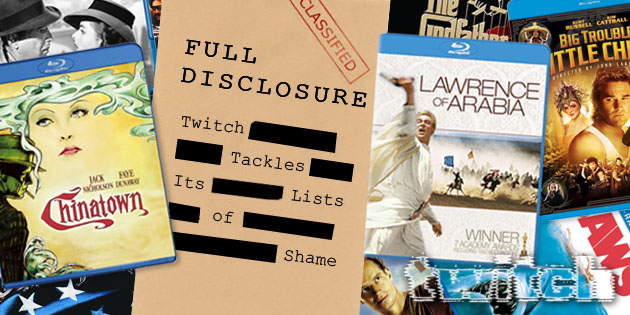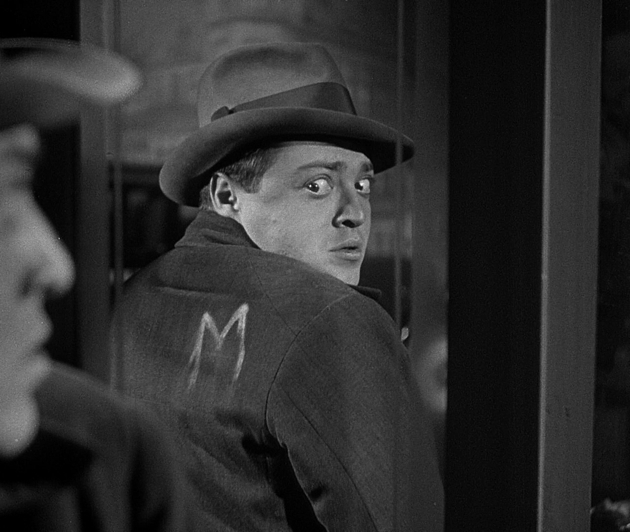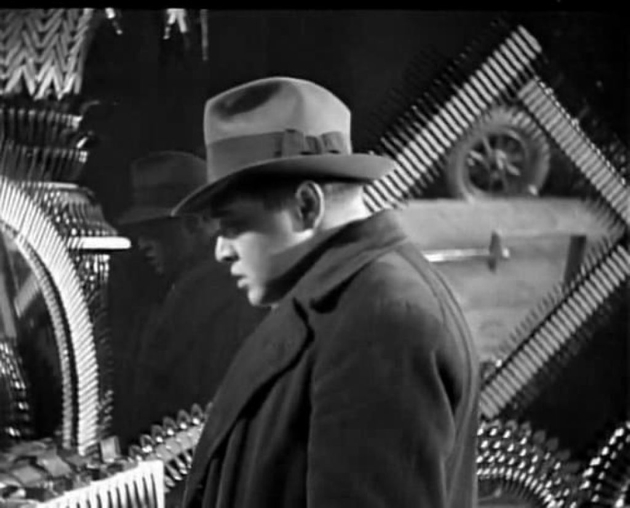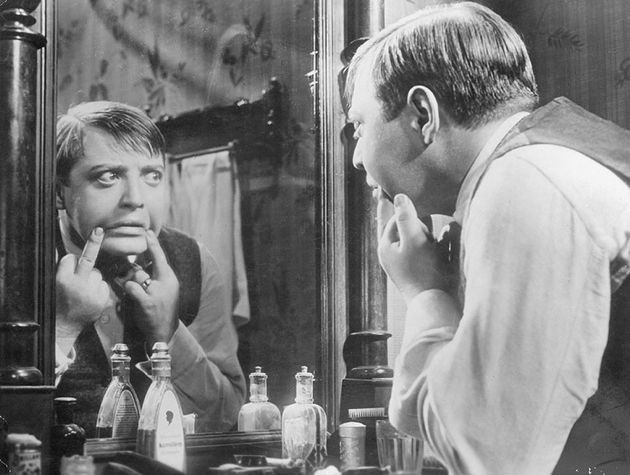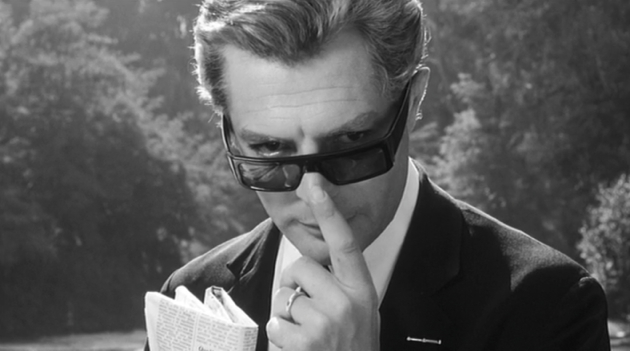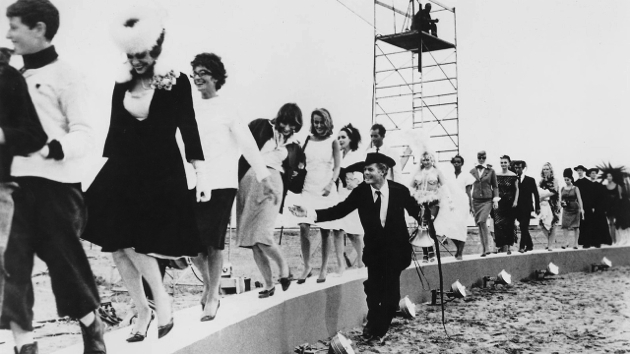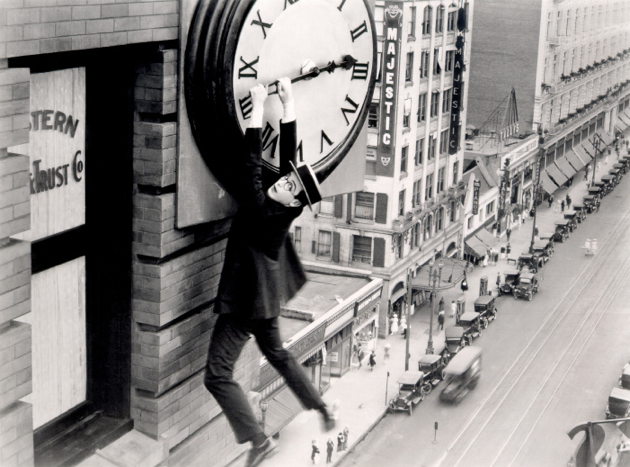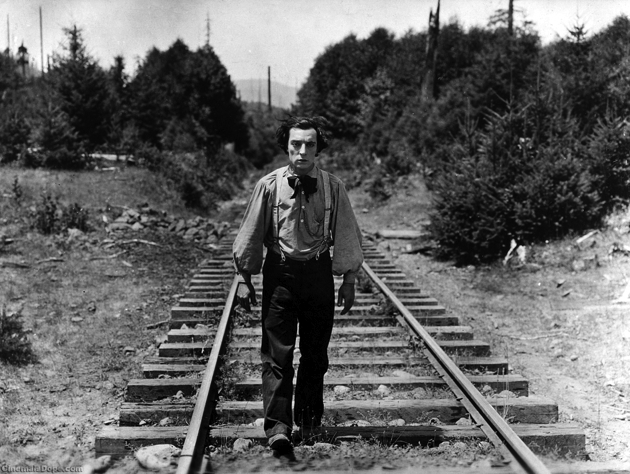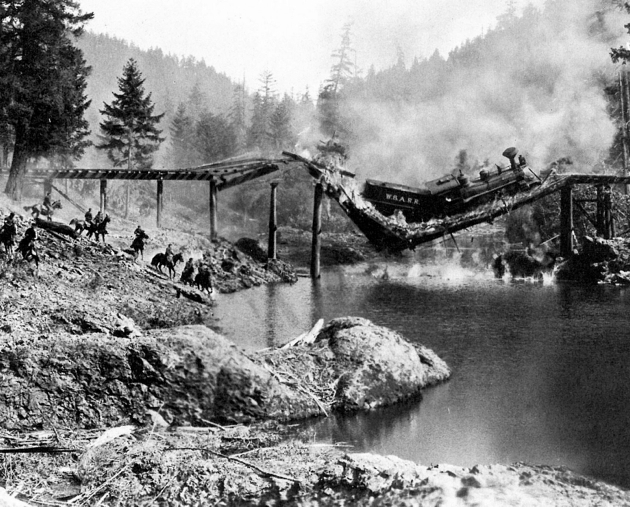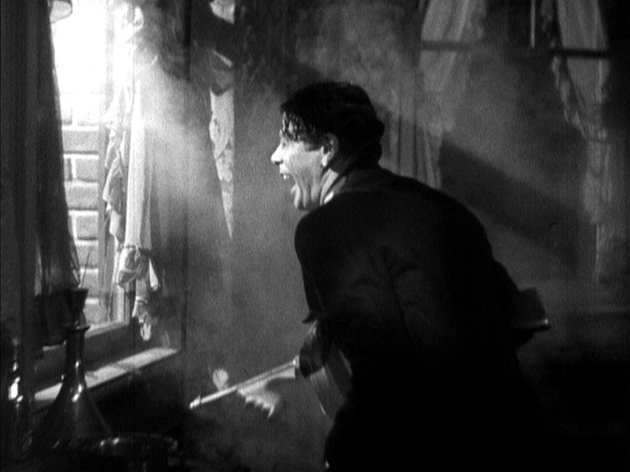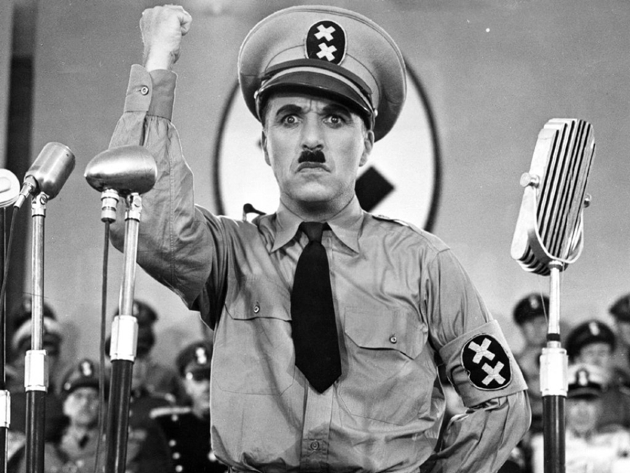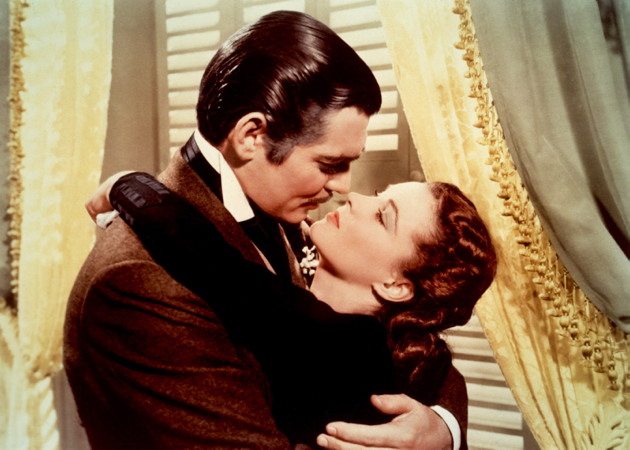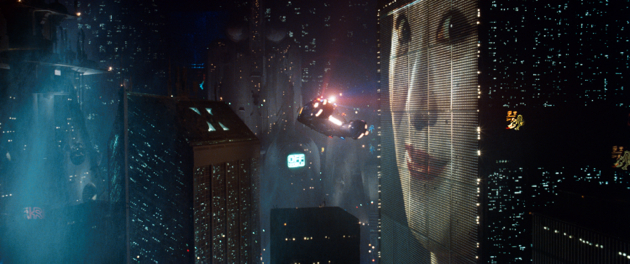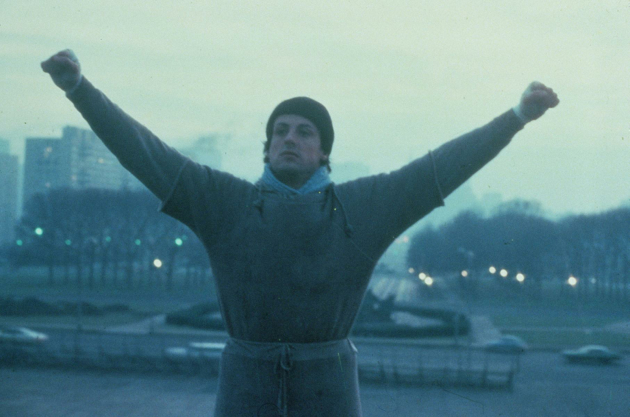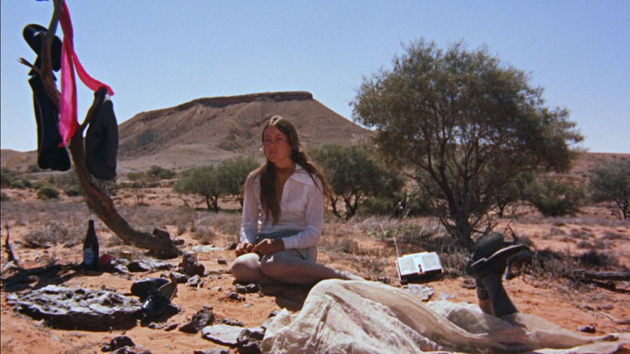















M (dir. Fritz Lang, 1931 Germany)
Todd Brown, Founder and Editior:
I'll get straight to the point: I do not like this movie. At all. While I admire Lang for his eye, his ability to frame a shot, for his always interesting camera movements and stellar production design, and while I certainly admire the audacity of making a movie about a serial killer of children in 1931 I found this just boring, disjointed, unengaging stuff. Clearly Lang isn't going for linear narrative here, so it feels somewhat silly to complain about the lack of narrative, but perhaps if he'd replaced the lack of narrative with something interesting I wouldn't. I don't think he did.
M (dir. Fritz Lang, 1931 Germany)
Peter Martin, Managing Editior:
I have not intentionally avoided Fritz Lang's M. In fact, I've long considered myself a fan of Lang, based almost entirely on his epic silent film Metropolis. Really, I was shocked to realize how few of Lang's films I'd actually seen before this month, but the ones I had seen, I absolutely loved. (Fury, his first American film, is incendiary.). So I started working my way through his ouevre, starting with some early silent films: Harakiri (1919), his version of Madame Butterfly, is of historical interest; Destiny (1921) is a visionary work of spirituality; Dr. Mabuse: The Gambler (1922) is a thrilling crime epic.
Then, by sheer chance, I heard that M would be playing locally on the big screen, and thanks to the kindness of the Dallas Film Society and Dallas Morning News film critic Chris Vognar, who hosted, I was able to cross this classic off my list of shame. And M proved to be kinda transcendent, starkly different and more grounded than his silent films, yet enthralling in its depiction of a community living in fear because a child murderer prowls amongst them. Peter Lorre is spellbinding, and Fritz Lang is fully in control of the cinematic arts. M is not afraid of the big questions, and Lang stages the action and paces the drama in unforgettable fashion.
M (dir. Fritz Lang, 1931 Germany)
Ard Vijn, Contributing Writer:
Fritz Lang's M is a film I've aimed to see since I was about ten years old. My mother told me it was very good, scary for any parent to watch, and that Peter Lorre was absolutely fantastic in it. In my teens I collected books on horror films, and M always featured prominently in them. When Eureka's Masters of Cinema released an excellent edition on DVD I was quick to swipe it up... only for it to languish in my to-watch pile. Worse: a few years later the same thing happened when German distributor Universum released a Blu-ray which trounced the Criterion and MoC versions, providing a more complete cut, kick-ass packaging and a gazillion extras. I bought it and... well, it has been staring at me till this month. I was actually glad when I checked which film I had to watch for this column, and noticed it was M.
As it turns out, my mom was right: more than 80 years after its initial release, this film still chilled me. For each part that has become dated, there are an astonishing number which haven't, and what Peter Lorre does here as the child murderer almost goes beyond acting. The man seems possessed! It helps that the film, even today, looks fantastic. Fritz Lang's use of shadow and timing to create tension is marvelous. I can only imagine what impact this film must have had in the 1930s when the subject matter was far more taboo, and the public had been almost completely un-exposed to police procedurals of any kind. Count this as the classic which delivered on its promise more than expected, and the best film I've seen by Fritz Lang so far.
8 1/2 (dir. Federico Fellini, 1963 Italy)
Winner of 2 Academy Awards including Best Foreign Language Film and Best Costume Design, Winner of 7 Italian National Syndicate of Film Journalists Awards, including Best Producer, Best Director and Best Screenplay.
Ryland Aldrich, Festivals Editor:
The final entry in my "Non-English Language" Full Disclosure subset (after Solaris and Tokyo Story) is Fellini's classic 8 1/2. Another one of those films I'd seen parts of over the years (and therefore said "sure, I've seen it"), I finally sat down to soak up all 2 1/3 hours of the self-referential 1964 Best Foreign Language Oscar winner. Right off the bat, I couldn't shake the feeling I'd seen the film before. Then it hit me. The 2009 film Nine! While I'd realized the two films were related, I'd never known just how similar Rob Marshall's version is in tone, plot, and style.
But not even Daniel Day-Lewis can do Marcello Mastroianni as well as Mastroianni can and his performance as the paranoid philanderer is one of cinema's greatest. This is no easy task when surrounded by so many strong supporting performances, in particular Anouk Aimée. The visuals are lush but I imagine they would have been so much more striking if I'd watched it in a theater instead of on Netflix. Perhaps that's part of the reason that as grand of a film as 8 1/2 truly is, it still feels smaller and less consequential than La Dolce Vita. Well, at least I don't have to lie about having seen it anymore.
8 1/2 (dir. Federico Fellini, 1963 Italy)
Winner of 2 Academy Awards including Best Foreign Language Film and Best Costume Design, Winner of 7 Italian National Syndicate of Film Journalists Awards, including Best Producer, Best Director and Best Screenplay.
Dave Canfield, Contributing Writer:
Whether they admit to it or not, critics often dither about when watching films on disc, multi-tasking rather than paying singular attention to the task at hand. Perhaps it’s one thing to do so during Sharknado. Let that debate commence.What a gift when we run into a film like 8 1/2 (1963). I was transfixed. From the opening dream sequence to the last emotionally challenging moment, I kept being called into the story by foibles, sins, joys, regrets and when I wasn’t held in thrall by my emotions, I was glued to the stunning cinematography.
The film follows Guido, a director who has lost his muse and in attempting to find it again, revisits his memories of all the women he has cared for or who have cared for him, and his upbringing in a strict Catholic monasterial school. It all takes place in the midst of his biggest project, a project he doesn’t even have the confidence to cast, much less shoot, because he feels he has nothing to say. What he discovers leads him from mistress to wife, to his own morally truncated inner man-child, whose insecurities regarding his masculinity have blinded him to a most important truth. That to love is to love imperfectly, to throw ourselves on the mercy of whatever and whomever we hold dear. We will of course, have failed, but it doesn’t make the effort less wonderful to behold.
Director Frederico Fellini delivers a fever dream of humanity; parading peacocks, pitiable and then suddenly too much like us. Magicians, clowns, mad beach front dancers. Self righteous religionists and irrelevant intellectuals. Hangers on, paparazza, and genuine spiritual advisors. Creative co-conspirators and divas introduce Guido, to all of himself and he is at once deflated and elevated in the process. Masterpiece.
Safety Last! (dir. Fred C. Newmeyer/Sam Taylor, 1923 USA)
James Marsh, Asian Editor:
This was something of a last-minute substitution for me, as I was unable to acquire a copy of Chen Kaige's Farewell My Concubine in time for this month's deadline (so alas, the Chinese Palme D'Or winner eludes me for at least another month). However, Harold Lloyd's signature work was more than a worthy replacement.
I think every cinephile worth their salt will be familiar with the iconic image of Lloyd hanging from a clock way above the Los Angeles skyline, even if they haven't seen his hugely successful and influential film, Safety Last!. I counted myself amongst those until now - and kudos to the Criterion Collection for their recent Blu-ray release of the film, brimming with fascinating supplements about Lloyd's career and how he performed his stunts.
Similar in theme to many other films of the period that I've seen - Sunrise, The Last Laugh, Modern Times - the plot of Safety Last! revolves around the lure of the Big City and the lengths ambitious youngsters will go to make a buck and succeed.
Here, Lloyd plays a store clerk who lies about the importance of his job and spends all his cash on gifts to send home to his sweetheart. When his boss puts the call out for ways to raise the store's profile, Harold strikes upon the idea of getting his pal (real-life human fly Bill Strother) to climb up the outside of the building. Of course, a twist of fate forces hapless Harold to perform the feat himself, and the rest is history.
Best viewed without the foreknowledge of how it was achieved, Safety Last! stands the test of time remarkably well, building well to its breathless finale that showcases great stunt work, but more importantly, the inventiveness and skill of a singular cinematic treasure.
The General (dir. Buster Keaton/Clyde Bruckman, 1926 USA)
Brian Clark, European Editor:
In Bernardo Bertolucci's The Dreamers, Louis Garrel and Michael Pitt get into a heated argument over whether Charlie Chaplin or Buster Keaton is superior. If the film is to be believed, the French unanimously prefer Chaplin.
Perhaps this is the reason why during my time in Paris, I saw at least half a dozen Chaplin movies and never a Keaton. The General, which Keaton considered his greatest film, seemed as good a place to start as any.
But perhaps it wasn't. The film was panned upon release, and given Keaton's reputation as a funny man, it's easy to see why; Keaton crafted a chaotic historical adventure which, despite a few hilarious asides, isn't all that funny.
However, while it's not the greatest showcase for Keaton the comedian, I finished the film completely in awe of Keaton the filmmaker. The train-chase sequences in this one are dizzying and jaw-dropping, putting even recent whiz-bang stunt movies like Fast and Furious 6 to shame. Rather than editing trickery or models, Keaton stages the action using mostly real trains and ballsy stunts, and the payoff is huge. So ultimately, rather than provoking laughter, The General made me once again reflect on how sad modern action spectacles have become.
But for now, I think Chaplin is still funnier.
The General (dir. Buster Keaton/Clyde Bruckman, 1926 USA)
Niels Matthijs, Contributing Writer:
I genuinely looked forward to seeing The General this month. Not because I was expecting to be blown away by it, but because I wanted to compare it to the films of Charles Chaplin. After four major disappointments from Chaplin's side, I was ready to find out whether slapstick of the 20s just wasn't my thing. After 79 minutes (I watched the 24fps version) the verdict was clear. Keaton is the man, Chaplin is out.
I liked Keaton (the actor) a lot better than Chaplin (the actor). Keaton forgoes extreme facial expressions and has a slightly more natural body language. It makes him less of a weirdo, more of a human being. As a director, he does a lot more with the visuals too. Smart framing and camera angles are incorporated into the comedy, which comes off a lot classier than Chaplin's foolery. Keaton also keeps the use of intertitles to a bare minimum, which is very much appreciated. But it's the stunts that make this film so much more fun. Hardly mindblowing by today's standards, but they still work and they still manage to impress.
The 24fps version's running time is just 79mins, compared to 106mins (18fps). A smart option as neither the story nor the dramatic/romantical impact was worth bothering with. The soundtrack is an important factor too here. I avoided the piano best-of version, instead picking a more modern variation that suited the film well, even if it was still a little overstated.
All in all I quite liked The General. I still don't see what makes it so great (apart from the obvious influence it has had on later film makers), but all in all it was a fun little film that didn't outstay its welcome.
Scarface, The Shame of the Nation (dir. Howard Hawks, 1932 USA)
Jason Gorber, Featured Critic:
After years of watching films with gangsters and gunplay, of DePalma and Stone’s “Say hello to my little friend” redux and our travels to the glorious Boardwalk Empire, I’ve finally gotten around to seeing more than just clips of Howard Hawks and (the uncredited) Richard Rosson’s seminal 1932 film, Scarface.
Perhaps the most surprising element wasn’t the polemical nature of the film, but how brazen it is. “The picture is an indictment of gang rule in America and of the callous indifference of the government”, the first card practically screams, while the second demands, “What are you going to do about it?”
Starting by admonishing the audience is a bold move, but so is the film. There’s loads of violence and witty rejoinders, liberty granted by producer Howard Hughes’ deep pockets, allowing them to run around the censors. The Ben Hecht script has its dated moments, but it also has a few choice zingers. Muni’s animalistic portrayal is arch, but convincing. I loved the coin-flipping George Raft, and seeing a hatchet-faced Boris Karloff do his best Chicago accent as the slimy Gaffney. Sure, the clown-like elements, and polemicism don’t always gel, but the mix of violence, romance and social commentary was as bold then as it is now.
One notes clear challenges they were still having at the time doing sound recording, yet all is forgiven when you think that this is a mere five years after The Jazz Singer made its bow.
There’s a giddiness that’s intoxicating, and it’s clear to see why it became a sensation. I may prefer the children of this film, from Miller’s Crossing on down, but it’s nice to finally have seen where many of these tropes found their origin, on the gritty streets of Chicago where the rattle of the Thompsons shook the town to its core.
The Great Dictator (dir. Charles Chaplin, 1940 USA)
Nominated for 5 Academy Awards, including Best Picture, Best Actor and Best Screenplay, Winner of the Kinema Junpo Award for Best Foreign Film
Andrew Mack, Contributing Writer:
I cannot help but watch the ending of this film with a sense of infinite sadness, knowing what I - we all - know about the Second World War. Chaplin's passionate pleas in his final speech would not be enough to sway the course of human history for the next five years. Let's be honest. Since then we have been pretty shit at getting along too.
That being said, what a delight it is to see Chaplin doing what he does best. To see the full extent of his physical comedy, from the doomed plane ride out of enemy territory to the dance with the floating globe. The Great Dictator is chock full of tremendous physical comedy. I found myself lamenting the disappearance of such skill. No one does 'great' physical comedy any more. It exists, in minute displays, but has mostly been replaced with gross out humour.
Honestly, The Great Dictator does run a tad long and the flow is a bit choppy. But I feel guilty for saying so, because there may never be another like Chaplin and I enjoyed this film very much.
Gone With The Wind (dir. Victor Fleming, 1939 USA)
Winner of 8 Academy Awards, including Best Picture, Best Director, Best Actress and Best Supporting Actress
Eric Ortiz Garcia, Contributing Writer:
Gone with the Wind opens with a static image: you can read the word “Overture” for about 3 minutes. Then you realize this is a film that takes its time, using film characteristics that are now pretty much gone. It makes you read, since there are long intertitles (including full letters) as narrative resources. And it also offers some splendidly gigantic scenes with tons of extras.
Victor Fleming’s classic is definitely a subjective view of the American Civil War. The Confederates are the victims, while the “Yankees” are the evil, brutal army. The situation is as simple as that. But at the same time, the film is a great character piece, with a masterful lead performance from the late Vivien Leigh. Her character, Scarlett O’Hara, goes through many emotions during the 200+ minutes, as you can probably imagine.
She makes the journey fun and entertaining, with her childish attitude, but also a really difficult one, once war brings consequences. It was fascinating to see the evolution of this character, changing together with the times, going from being a likable crazy girl to just plain unpleasant (she marries three times!).
It’s a classic story of unrequited love that becomes a real life tragedy. The war is over near the beginning of the second half and Scarlett’s situation gets better, yet the drama goes on and on. I was able to ignore the constant melancholic speech (anti-Union of course), thanks to the tragic love story with Scarlett and the three other important characters: Scarlett’s love interest Ashley (Leslie Howard), the extremely kind Melanie (Olivia de Havilland) and the awesome Rhett Butler (Clark Gable). I found in Gone with the Wind a really engaging epic drama, though I’m not sure if I’m going to watch it again anytime soon.
Blade Runner (dir. Ridley Scott, 1982 USA)
Nominated for 2 Academy Awards, including Best Visual Effects and Best Art Direction, Winner of 3BAFTAs, including Best Art Direction, Best Cinematogrpahy and Best Costume Design
Ernesto Zelaya Minano, Contributing Writer:
Blade Runner is said to be a major influence on the entire cyberpunk genre, and it’s easy to see why: its vision of a futuristic dystopia is the kind of thing that makes one go “ohh” and “ahh” over and over. This is one movie that demands to be seen on a big screen.; from Rick Deckard’s apartment to J.F. Sebastian’s surreal workshop, it’s so immersive and detailed I wished I had spent more time there.
At its core, this is an old-fashioned noir, with Deckard as the Bogart-esque hardened, cynical gumshoe. Harrison Ford is serviceable in the part, but the real star of the show is Rutger Hauer. Roy Batty is cold and ruthless one minute, naïve and emotional the next. The actor shines, proving that he’s an underappreciated talent. Sean Young is also great as Rachel, immensely vulnerable and innocent. Too bad the actress turned out to be batshit crazy in real life and her career stalled.
Interesting that the Replicants aren’t really bad guys when you think about it: they’re like children discovering their emotions for the first time and only want to prolong that feeling, at times coming off as wide-eyed, innocent teenagers. It’s easy to feel sympathy for them.
This is a film of ideas: the concept of artificial beings discovering their own humanity, as well as questions regarding our own human existence; like any good sci-fi, it makes you think. However, it feels confusing and disjointed at times, although this probably has something to do with there being about six different versions from what I’ve read. Mine was the “Final Cut”; no idea if it’s the definitive one, but the introduction from Ridley Scott was reassuring.
Blade Runner is ambitious. It would probably take a few more viewings to fully grasp everything it’s trying to convey, but on a first viewing, it was still entertaining. And on a purely visual level, it’s beautiful to just gawk at.
Rocky (dir. John G. Avildsen, 1976 USA)
Winner of 3 Academy Awards, including Best Picture, Best Director and Best Editing, Winner of the Golden Globe for Best Motion Picture - Drama, and Winner of the Japanese Acdemy for Best Foreign Language Film
James Dennis, Contributing Writer:
I'm particularly unfamiliar with the Rocky universe. Until a few days ago I had never seen any of the Rocky films, which is a little odd, since during my early teenage years I was as enthralled by Sly Stallone's beefcake flicks as any red-blooded male. Back then I saw all the Rambo movies, Cobra, Tango and Cash, Cliffhanger and even Demolition Man. Yet I always perceived the Rocky movies very much as 'sports' rather than action movies, and I'd have taken a gun, helicopter and/or car chase over a boxing ring any day.
Most of Stallone's renaissance output (Rocky Balboa aside) has had a look-in too. He's still an entertaining screen presence and, as I'd heard in relation to Rocky, a whole lot more skilled in the acting and screenwriting departments than his more over-the-top efforts might suggest. I was a little sceptical though, as I remember hearing such things about Copland which was... actually, I can't even remember how it was.
On watching Rocky, the biggest surprise was just how little boxing there is. Aside from the bookend fights, there's nothing. Before we even get to the famous step-climbing montage (which I had seen previously) there's 90 minutes or so of vaguely gritty urban drama as Rocky Balboa tries to court Talia Shire's shy, yet improbably pretty, Adrian. I found the direction rather flat, aside from a few flourishes like the aforementioned steadycam-enabled jogging montage, and Stallone's performance is solid rather than inspired.
Though an archetypal underdog story, much of the thrust is actually that of a rather sweet romance between two drifting souls who find each other, with the denouement bearing that out. I actually found it a rather unusual film, which disappoints as a boxing movie, yet compels nonetheless as a tale about the triumph of the human spirit. For me, an essential piece of Stallone Cinema, but not the rousing crowd pleaser I was expecting.
Walkabout (dir. Nicolas Roeg, 1971 Australia)
Played In Competition at the Cannes Film Festival
Kurt Halfyard, Contributing Writer:
Considering how much I love Don't Look Now and The Witches, I'm surprised it took me this long to get to Nicolas Roeg's Walkabout. There are enough ripe and verdant images on display here to fill a dozen more films. It starts in Sydney, in the hustle & bustle, and commitments of civilization, with the drone of a didgeridoo underscoring the white noise of the city and the effect it has on a certain father. Things get alarming very quickly, as the same father takes his teenage daughter and even younger son into the Outback for a picnic, only to set their car on fire while trying to kill them. The two kids run off, stranded and abandoned to their own devices in the desert with precious little but the clothes on their backs, a radio and a few supplies. The smoke of the burning vehicle of modernity the only thing connecting them to their previous life.
The desert teams with its own vibrant cocktail of life, death, rebirth and an endless amount of uninterrupted space. Roeg shoots the animal life and the people with a raw sensuality that is vulgar and lyrical and among the most powerful images ever committed to screen. Actress Jenny Agutter, who plays the girl, spends a full two minutes swimming solo in a flower and weed-filled pond stark nude, in contrast to giving swimming lessons to her brother in a chlorine pool in the film's opening minutes. There is a pure uncensored joy, somewhat sexual, but mostly not, in this act. It is merely natural.
The two children eventually come into contact with an Aborigine of about the same age as the girl, who is on his own, more literal walkabout. He helps them survive, and tries to protect them from civilization, until that same civilization nearly runs him over. The are various asides that seem to take potshots at civilized life, such as a plantation making tacky souvenirs with Aborigine labour, or some scientists setting out weather balloons, but really obsessed with the sex of the only female member of their group.
Despite being an inch from the end of her life on more than one occasion, the 'feeling' of being so intensely alive becomes a nostalgic one in the film's unforgettable climax. I am in full agreement that this is essential cinema to come out of Australia, or anywhere in the world.
The Godfather (dir. Francis Ford Coppola, 1972 USA)
Winner of 3 Academy Awards, including Best Picture, Best Actor and Best Adapted Screenplay, Winner of 5 Golden Globes, including Best Picture - Drama, Best Director and Best Actor
Shelagh M. Rowan-Legg, Contributing Writer:
The Godfather is one of my mother's favourite films. When I was a teenager, it was on television and she insisted that I watch it with her. It took about twenty minutes before I was bored and left the room. This was before I was a serious cinephile, so I hope I can be forgiven. Also, I've never had much interest in mafia stories. But considering how much the film has set up our image of the mafia in popular media, it was about time I sat down and watched it. And luckily, I was not bored this time around.
Seeing Al Pacino on Sky commercials in the UK recently made his incredible performance all the more poignant. Michael's transformation from good-boy war-hero to mafia king, arguably far more brutal and cruel than his father ever was, seems sadly inevitable. Only someone who has traversed such a chasm would make such a terrifying change.
I haven't read the book, but given the length of the film, I would guess that most of the narrative from it remained intact. It was great to see a story that really took its time to unfold, step by step, this disintegration of Michael's integrity in a way that isn't explored in film much anymore (though it arguably is in television).
The richness of the art direction and mise-en-scene also made me lament even more the slow demise of print film. It's also a particular 70s aesthetic, seen in films such as Heaven's Gate and Days of Heaven, along with the slow, more thoughtful storytelling, that brings the prints alive. It is a form that has moved perhaps inevitably to television. But I look forward to my viewing of The Godfather Part II in a few months time.

More about Lists of Shame 2013
Around the Internet
Recent Posts
DAVID BYRNE'S AMERICAN UTOPIA 4K Review: Barefoot in a Suit
Screen Anarchy Last Minute Gift Guide 2025 Episode 1: Kino
AMSTERDAMNED II Review: A Playful Late Sequel
Leading Voices in Global Cinema
- Peter Martin, Dallas, Texas
- Managing Editor
- Andrew Mack, Toronto, Canada
- Editor, News
- Ard Vijn, Rotterdam, The Netherlands
- Editor, Europe
- Benjamin Umstead, Los Angeles, California
- Editor, U.S.
- J Hurtado, Dallas, Texas
- Editor, U.S.
- James Marsh, Hong Kong, China
- Editor, Asia
- Michele "Izzy" Galgana, New England
- Editor, U.S.
- Ryland Aldrich, Los Angeles, California
- Editor, Festivals
- Shelagh Rowan-Legg
- Editor, Canada


